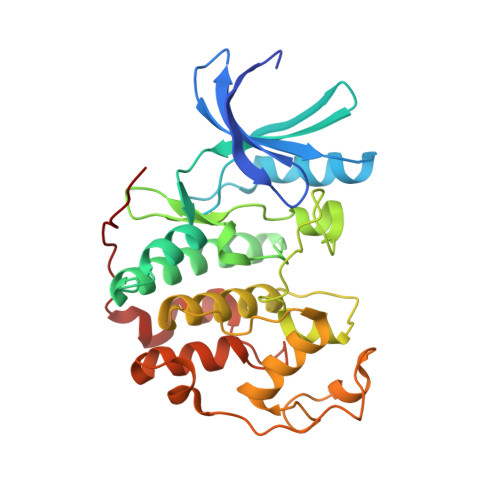FragLites-Minimal, Halogenated Fragments Displaying Pharmacophore Doublets. An Efficient Approach to Druggability Assessment and Hit Generation.
Wood, D.J., Lopez-Fernandez, J.D., Knight, L.E., Al-Khawaldeh, I., Gai, C., Lin, S., Martin, M.P., Miller, D.C., Cano, C., Endicott, J.A., Hardcastle, I.R., Noble, M.E.M., Waring, M.J.(2019) J Med Chem 62: 3741-3752
- PubMed: 30860382
- DOI: https://doi.org/10.1021/acs.jmedchem.9b00304
- Primary Citation of Related Structures:
6Q3B, 6Q3C, 6Q3F, 6Q48, 6Q49, 6Q4A, 6Q4B, 6Q4C, 6Q4D, 6Q4E, 6Q4F, 6Q4G, 6Q4H, 6Q4I, 6Q4J, 6Q4K - PubMed Abstract:
Identifying ligand binding sites on proteins is a critical step in target-based drug discovery. Current approaches to this require resource-intensive screening of large libraries of lead-like or fragment molecules. Here, we describe an efficient and effective experimental approach to mapping interaction sites using a set of halogenated compounds expressing paired hydrogen-bonding motifs, termed FragLites. The FragLites identify productive drug-like interactions, which are identified sensitively and unambiguously by X-ray crystallography, exploiting the anomalous scattering of the halogen substituent. This mapping of protein interaction surfaces provides an assessment of druggability and can identify efficient start points for the de novo design of hit molecules incorporating the interacting motifs. The approach is illustrated by mapping cyclin-dependent kinase 2, which successfully identifies orthosteric and allosteric sites. The hits were rapidly elaborated to develop efficient lead-like molecules. Hence, the approach provides a new method of identifying ligand sites, assessing tractability and discovering new leads.
- Northern Institute for Cancer Research, Medical School , Newcastle University , Paul O'Gorman Building, Framlington Place , Newcastle upon Tyne NE2 4HH , U.K.
Organizational Affiliation:

















